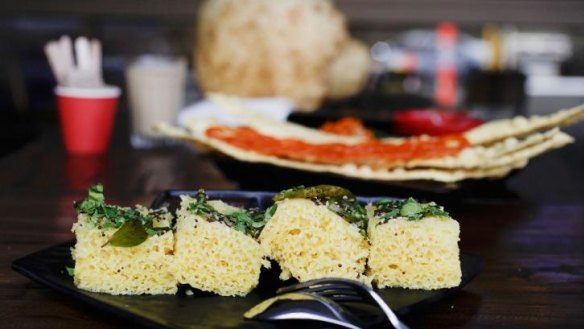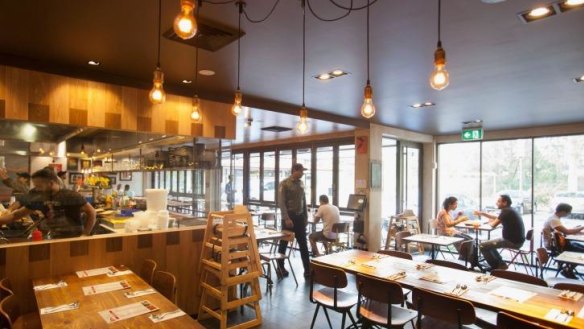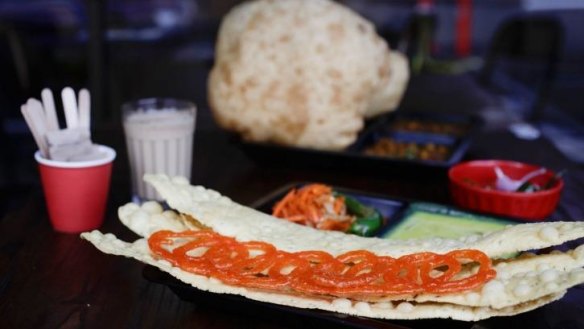Chatkazz

Indian
A few years ago, Dharmesh Rangparia was working as a bored tax accountant in Sydney, dreaming of Mumbai, the city where he grew up. Specifically, he longed for the smells and sounds of the street food vendors that lined the narrow streets.
While there were countless Indian restaurants in Western Sydney where he lived, most served curries and naan, but not the snack food inspiring his nostalgia.
Rangparia knew how to cook – his father taught him well – and he was routinely feeding about 40 friends for a catch-up each fortnight. "You should open a street food restaurant," they often suggested.

That was the seed for Chatkazz, which opened in Harris Park three years ago and, since relocating to a larger premises in March, serves about 700 people each day.
Rangparia, who owns the business with two schoolmates from Mumbai, calls himself a chef "by passion, not profession".
"Food is in our blood," he says.

As the restaurant has expanded, so has the menu. It now includes almost 200 dishes from many regions of India, including Bombay Chinese, an adaption of Chinese food that has become very popular in India.
When we arrive at Chatkazz on a Saturday morning, it feels somewhere between a fast food chain and a family restaurant. And, like the streets of India, it's chaotic.
A long line of people wait to order takeaway. The busy young staff, in red caps and black aprons, scurry around clearing tables and collecting orders written on paper forms.
The restaurant seats 125 people and it's almost always full, mostly with local families. Yet it doesn't feel cramped, as the doors and windows fold out, giving it an open-air feel. The interior is decorated with colourful tiled feature walls and retro light fittings.
Even at peak hours, the wait for a table is rarely more than 10 or 15 minutes, and there is no shortage of shops selling Indian sweets nearby to bide your time.
The restaurant is 100 per cent vegetarian, as Rangparia has been from birth, and between 9am and 11am on weekends, there is a special breakfast menu. We ask for recommendations, as we are not familiar with many of the dishes.
Fafda and jalebi is a typical place to start, we are told, and khaman dhokla is a must try. We also order a handful of other dishes we settle on after a quick Google search.
The food comes fast, all at once and on metal trays the size of pizza pans, meaning we have to clear everything non-essential from the table to make room.
I'm nervous to try the fluoro-orange jalebi, which is made by deep-frying a flour batter in spiral shapes before soaking them in a sugar syrup. Lacking a sweet tooth, I can't take more than a bite, but my dining companions assure me the jalebi is as fresh and delicious as they've had.
From here it becomes hard to keep track of which dish is which. Most are breads and fried pastries served with a variety of sides – salsas, curries, sambals and yoghurts – which is where most of the flavour and spice lies.
My favourite is the lilva kachori, fried balls like samosas filled with crushed green beans and spices. The others at my table prefer the khaman dhokla, a steamed cake sprinkled with mustard seeds and curry leaves. The savoury cakes themselves have an unusual spongy texture and mild taste, but come to life when used to soak up the accompanying red and green sauces. The sweet and tangy red sauce, made of dates and tamarind, is my favourite flavour of the whole meal and I wipe up every last skerrick with what is left of our crispy paratha bread.
We have over-ordered for three people but, at street food prices, we can afford to. The most expensive item on the breakfast menu is $10.90 and nothing on the extended menu is more than $16.
"It's not about the money," Rangparia explains. "It makes us happy to feed people."
THE PICKS
Khaman dhokla, pani puri, vada pav, papri chaat
THE COFFEE
Indian-style coffee and masala tea
THE LOOK
Like a trendy, upmarket food court
THE SERVICE
Helpful but hard to engage when busy
Restaurant reviews, news and the hottest openings served to your inbox.
Sign up